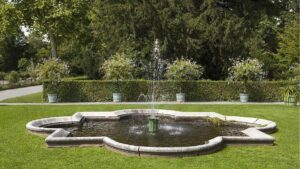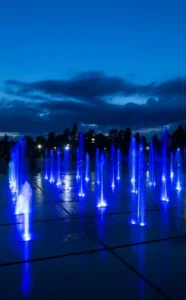- Product Knowledge
Why Is the Beam Angle of Fountain Lights So Important?

Aesthetic Appeal and Design Precision
The beam angle of fountain lights is crucial in shaping the visual impact of the display. A well-chosen beam angle contributes to the precision of the design, highlighting the architecture of the fountain and accentuating water features. Whether illuminating cascading water jets or intricate sculptures, the right beam angle ensures that the artistic intent is realized, creating a visually stunning and cohesive display.
Visibility and Illumination Range
The practical function of fountain lights relies on their ability to illuminate the water features effectively. The beam angle determines the coverage and reach of the light, influencing the visibility of the fountain at night. A narrow beam angle may be suitable for emphasizing specific elements, while a wider angle ensures a more evenly distributed light, enhancing the overall visibility of the fountain.
Color Dynamics and Spectacle Creation
Many fountain light displays incorporate dynamic color changes to enhance their visual appeal. The beam angle affects how these colors are dispersed, influencing the vibrancy and clarity of the light show. Proper consideration of the beam angle is essential to achieving the desired color dynamics and creating a captivating spectacle that engages viewers and enhances the overall experience.
Energy Efficiency and Environmental Impact
The beam angle plays a role in optimizing energy efficiency in fountain lighting systems. By selecting an appropriate angle, it is possible to minimize light spillage and wastage, directing the illumination precisely where it is needed. This not only reduces energy consumption but also contributes to minimizing light pollution and its potential environmental impact.
Customization and Adaptability
The versatility of fountain lighting demands a range of beam angles to accommodate different designs and settings. Whether adorning public squares, private gardens, or commercial spaces, fountain lights should offer customization options to adapt to various architectural and landscape requirements. The ability to adjust the beam angle allows for flexibility in achieving different lighting effects.
In conclusion, the beam angle of fountain lights is a critical factor influencing both the aesthetic and functional aspects of these captivating displays. From precision in design to visibility, color dynamics, energy efficiency, and adaptability, the careful consideration of the beam angle ensures that fountain lights fulfill their potential as a captivating and versatile element in landscaping. By understanding and leveraging the importance of beam angles, designers and enthusiasts alike can create fountain displays that not only illuminate the night but also leave a lasting impression on those who experience their beauty.



